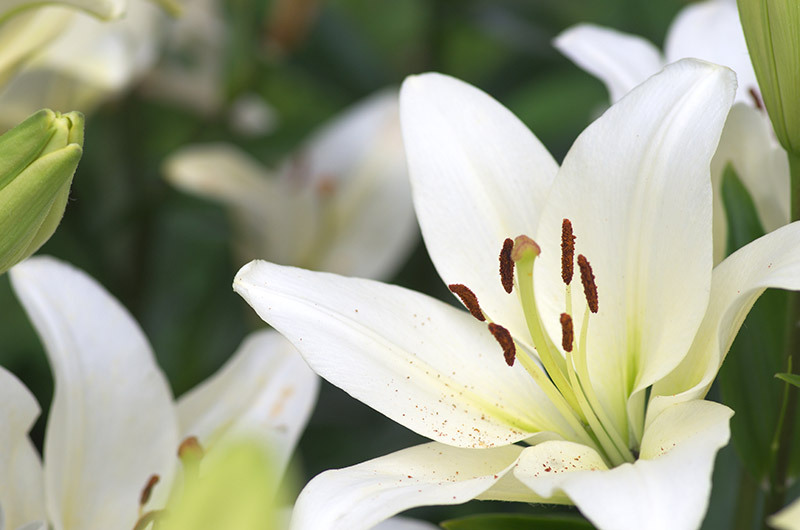How to Keep Your Hydrangeas Thriving
Posted on 18/08/2025
How to Keep Your Hydrangeas Thriving: The Ultimate Guide
Hydrangeas are beloved for their lush, vibrant blooms and elegant foliage, making them a favorite among gardeners and landscapers alike. But to keep hydrangeas healthy and thriving all season long, you need to understand their unique needs and how to care for them properly. In this comprehensive article, you'll discover everything you need to know about keeping hydrangeas flourishing--from planting tips and watering techniques to pest prevention and bloom enhancement.

Understanding Hydrangeas: Types and Their Characteristics
Before delving into care tips, it's important to recognize that not all hydrangeas are the same. There are several different types, each with unique requirements and growth habits.
The Main Types of Hydrangeas
- Bigleaf Hydrangea (Hydrangea macrophylla): Known for its large, round flower heads and often variable color (pink or blue depending on soil pH).
- Panicled Hydrangea (Hydrangea paniculata): Features cone-shaped blooms, generally white, turning pink as they mature.
- Oakleaf Hydrangea (Hydrangea quercifolia): Recognized for its distinct oak-shaped leaves and white-to-pink flowers.
- Smooth Hydrangea (Hydrangea arborescens): Offers broad, dome-shaped flowers--often seen in varieties like 'Annabelle.'
- Climbing Hydrangea (Hydrangea petiolaris): A unique vine that produces delicate, lacy flowers.
Understanding your hydrangea type is essential because each has slightly different care requirements for optimal health and bloom production.
Planting Hydrangeas: Setting the Stage for Thriving Growth
Choosing the Best Location
Location is key to keeping hydrangeas healthy! These beautiful shrubs prefer an area with morning sun and afternoon shade, especially in warmer climates. However, some types (such as panicle hydrangeas) are more tolerant of full sun than others.
- Soil: Hydrangeas flourish in well-draining, fertile soils rich in organic matter. Heavy clay or sandy soils should be amended accordingly.
- Protection: Plant your hydrangeas in a spot protected from strong winds to prevent leaf and blossom damage.
How to Plant Hydrangeas Correctly
- Dig a hole twice as wide as the root ball and just as deep.
- Mix compost or well-rotted manure into the removed soil.
- Place the hydrangea at the same level it was growing in its pot.
- Backfill with the amended soil, gently firm, and water well.
- Mulch around the base to retain moisture and regulate soil temperature.
Proper planting is the foundation of robust hydrangeas that will reward you with years of stunning blooms.
How to Care for Hydrangeas: Tips for Long-Term Thriving
Watering Techniques for Healthy Hydrangeas
Water is crucial for keeping hydrangeas thriving. These shrubs have shallow root systems and are highly susceptible to drying out. Regular and deep watering is essential, particularly in the first two years after planting and during dry spells.
- Frequency: Water deeply at least once a week; increase to two to three times weekly in hot, dry weather.
- Method: Water at the base to avoid wetting the leaves, which can cause disease.
- Mulching: Apply a 2-3-inch layer of organic mulch (like bark or straw) around your hydrangeas to retain moisture and suppress weeds.
Fertilizing Hydrangeas for Abundant, Vibrant Blooms
For hydrangeas to maintain lush growth and plentiful blooms, the right feeding schedule is critical.
- Timing: Fertilize in early spring, just as new growth emerges, and again lightly in late spring if needed.
- Type: Use a slow-release, balanced fertilizer, or one formulated specifically for shrubs and flowers.
- Special Note: Avoid excess nitrogen, as it encourages leafy growth over blooms.
Tip: In acidic soils, bigleaf hydrangea flowers will be blue; in alkaline soils, they'll be pink. Aluminum sulfate can acidify soil, while garden lime raises pH.
Pruning Hydrangeas: Timing and Techniques for Optimal Growth
Why Prune Hydrangeas?
Proper pruning keeps hydrangea shrubs tidy, healthy, and blooming at their best. However, the best time and technique depend on the hydrangea type.
Pruning Guidelines for Hydrangea Types
-
Bigleaf & Oakleaf Hydrangeas:
- Prune just after blooming since these types set next year's buds on old wood.
- Remove dead or crossing stems and spent blooms.
-
Panicled & Smooth Hydrangeas:
- Prune in late winter or early spring as they bloom on new wood.
- Cut back stems by about one-third to promote strong new growth.
-
Climbing Hydrangeas:
- Prune sparingly after flowering; mainly to control size or remove dead stems.
Always use clean, sharp tools to prevent the spread of disease, and don't over-prune--this can sacrifice blooms!
Common Issues & How to Keep Hydrangeas Thriving Through Them
Dealing with Pests and Diseases
- Pests: Watch for aphids, spider mites, and scale insects. Treat with insecticidal soap or neem oil if necessary.
- Diseases: Powdery mildew, leaf spot, and root rot are common issues for hydrangeas, especially in humid conditions.
- Prevent Problems: Ensure good air circulation, avoid overhead watering, and remove diseased plant material promptly.
Solving Bloom Problems
- No Blooms? Make sure you're pruning at the right time and not cutting off next year's buds. Avoid over-fertilizing with nitrogen.
- Floppy Stems? Excess water or too much fertilizer can cause weak stems. Allow the soil to dry slightly between waterings.
- Changing Flower Color: Bigleaf hydrangea colors shift based on soil pH. See the earlier section for color control tips.
Best Seasonal Tips for Keeping Hydrangeas Thriving Year-Round
Spring
- Apply fresh mulch and fertilizer when new growth emerges.
- Begin consistent watering as temperatures rise.
- Inspect plants for winter damage and prune as needed.
Summer
- Maintain steady watering, especially during dry periods.
- Deadhead spent blooms to encourage more flowers.
- Watch for pests and treat promptly if found.
Autumn
- Gradually reduce watering as plants slow for dormancy.
- Stop fertilizing by early fall to prevent tender new growth.
- Rake away fallen leaves to reduce disease risk.
Winter
- Mulch heavily around the base for root protection, especially in colder climates.
- In very cold regions, protect stems with burlap or shrub covers.
- Refrain from pruning until spring unless removing damaged branches.
Pro Tips to Ensure Hydrangeas are Always Thriving
- Spacing: Give each hydrangea ample room for airflow by following the specific spacing recommendations for each type (usually 3-10 feet apart).
- Support: Stake tall varieties or plant within a border to prevent wind damage.
- Soil Testing: Test soil pH annually to maintain your desired flower color and keep nutrients balanced.
- Companion Planting: Grow shade-loving companions (such as ferns and hostas) nearby to create a lush, healthy garden ecosystem.
- Regular Monitoring: Walk your garden weekly to check for pests, disease, or moisture problems early.

Frequently Asked Questions About Keeping Hydrangeas Flourishing
Why aren't my hydrangeas blooming?
Most often, a lack of blooms is caused by incorrect pruning or winter bud damage. Make sure you're pruning at the right time for your hydrangea type, and protect buds from harsh winter weather.
Are hydrangeas drought tolerant?
Hydrangeas are not highly drought tolerant. Regular, deep watering--especially for newly planted or container-grown hydrangeas--is essential to keep them thriving.
How do I change the color of my hydrangea flowers?
Bigleaf hydrangeas respond to soil pH: acidic soil produces blue flowers, while alkaline soil makes them pink. Apply aluminum sulfate to acidify soil (blue) or garden lime to raise pH (pink). Oakleaf and panicle hydrangeas do not change color with soil pH.
Can hydrangeas grow in containers?
Yes! Use large containers with excellent drainage and high-quality, moisture-retentive potting mix. Container hydrangeas need more frequent watering and feeding than those in the ground.
Conclusion: Your Path to Lush, Thriving Hydrangeas
With the right care, your hydrangeas can thrive year after year, gracing your garden with spectacular blooms and healthy, rich foliage. Remember: proper location, correct planting, regular watering, timely fertilizing, and appropriate pruning are all key ingredients to success.
Monitor your plants regularly, respond quickly to any issues, and tailor your care to the specific hydrangea variety you're growing for the ultimate reward--gorgeous, thriving hydrangeas that bring joy and beauty to your outdoor space.
For more expert gardening advice and tips on how to keep your hydrangeas thriving, stay tuned to our blog or contact a local horticulture expert for personalized guidance. Happy gardening!
Latest Posts
Decipher the language of flowers for each birth month
Fresh Blooms to Celebrate a Special Birthday
How to Keep Your Hydrangeas Thriving
10 Office Plants That Thrive with Little Attention
Understand Your Birth Flower and Its Symbolic Messages for You






